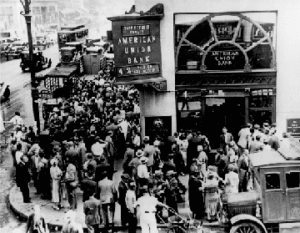Understanding the Economic Landscape: The Real Indicators of Stability

Welcome to Extreme Investor Network, where we dig deeper to uncover the fundamental forces driving economic stability. Today, let’s clarify a common misconception: many believe the stock market is the primary gauge of economic health. In reality, it’s the debt market that plays a pivotal role in determining the onset of recessions and depressions.
The Differentiation between Recession and Depression
At Extreme Investor Network, we recognize that not all economic downturns are created equal. A recession typically signals a mild economic slowdown, often contained within a single country. This downturn can result in a rise in unemployment rates, generally hovering around 10%. In stark contrast, a depression casts a much wider net, impacting global economies and pushing unemployment rates above 25%. The fallout from a depression can manifest in civil unrest and social upheaval, as witnessed in various historical precedents.
The Real Culprit: The Debt Market
Many investors erroneously focus solely on stock performance as an indicator of economic well-being. However, the dynamics of the debt market are crucial. A staggering 30% or even 40% decline in stock prices may not induce a depression, but even a minor disruption in government debt can trigger severe economic repercussions.
Let’s break this down: banks are mandated by law to hold government debt as reserves. If the value of this debt diminishes—due to rising interest rates or sovereign defaults—the ramifications can be catastrophic, leading to the closure of banks and triggering widespread economic instability.
Lessons from History: The 1931 Sovereign Debt Crisis
Looking back at financial history reveals how interconnected our global economies truly are. During the Great Depression, the contagion began with sovereign defaults in Europe, illustrating how swiftly economic turmoil can cascade across borders. The events of 1931 taught us that a default in one region can lead to a surge in the value of the U.S. dollar while simultaneously felling the stock market.
It’s essential to understand that capital flows during periods of financial uncertainty tend to favor government bonds, as investors seek safer havens. Historically, we saw this dynamic during World War I, the 1931 Sovereign Debt Crisis, and World War II. Each time, government bonds became the destination for fleeing capital.
The Aftermath of Defaults
When governments default, they sometimes undergo regime changes. The incoming leadership may disavow the debts incurred by their predecessors, creating a ripple effect across global financial markets. While the stock market can absorb general fluctuations—a 20% dip, for instance—an equivalent scenario in the debt market, particularly regarding sovereign bonds, is a telltale sign that serious economic trouble lies ahead.
Conclusion: Stay Informed, Stay Prepared
At Extreme Investor Network, our mission is to arm you with the knowledge necessary to navigate these complexities. By understanding the real indicators of economic stability—particularly the debt market—you can better position yourself to make informed investment decisions. We urge you to stay vigilant as we observe the ever-changing economic landscape, and remember: it’s not just what you see in the stock market that matters—it’s what lies beneath the surface that can signal a much larger crisis.
For more insights and historical analyses, continue exploring our website and deepen your understanding of the financial world around you.
By presenting this blog post through a unique lens, we’ve positioned Extreme Investor Network as a comprehensive source for not just understanding the present economic climate, but also learning from the lessons of the past.

